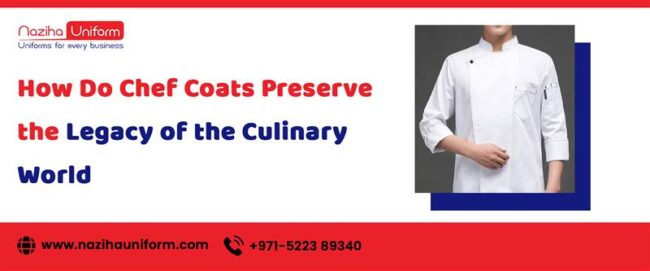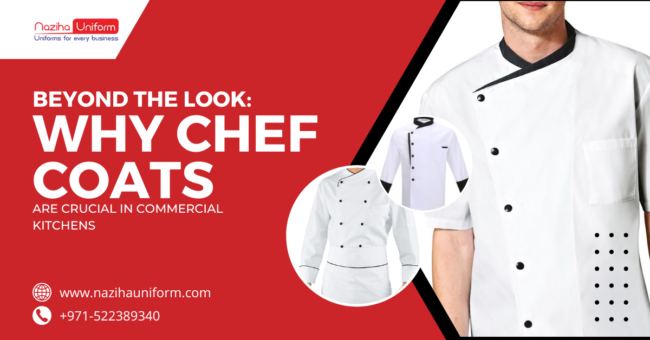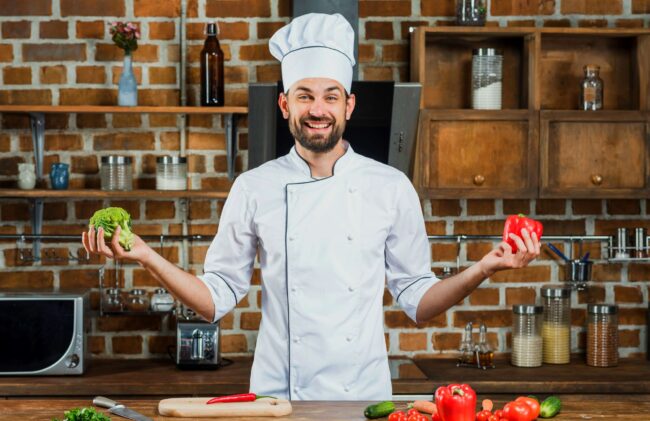How Do Chef Coats Preserve the Legacy of the Culinary World?
When we think of a chef, a particular image crosses our mind: a towering white hat and a meticulously clean double-breasted coat. This modest yet incredibly useful uniform protects the culinary art’s rich history and culture and maintains hygiene. However, have you ever thought about how chef coats represent history and why they look the way they do? Its perfect appearance and thoughtful design make it more than just a uniform.
A chef coat supplier plays a crucial role in maintaining this legacy. They ensure that professionals dress up in a way that reflects the demanding nature of their profession. Modern kitchens have adapted chef coats, but their essence remains deeply rooted in history. They symbolize their skill, authority, and firm commitment to cooking. This blog examines the journey, including its origin, function in upholding the culinary art’s heritage, and changes to accommodate modern kitchen needs.
The Historical Roots of Chef Coats
The story began in 19th-century France when the culinary arts went from mere cooking to an esteemed profession. Much of the credit goes to Marie-Antoine Carême, a legendary French chef known as the “King of Chefs.” He believed that chefs should not only master their craft but also present themselves with dignity and professionalism.
So Carême introduced the double-breasted white coat as a symbol of cleanliness and order in the kitchen. He chose white to convey the essential aspects of purity and hygiene in food preparation. With its two rows of buttons, the double-breasted design allowed workers to reverse the jacket to hide stains quickly. The coat maintains a polished appearance even during long, grueling shifts. It sets the standard for the uniform’s role as a functional garment and a status symbol.
This uniform also showed the hierarchy in the kitchen. In traditional French brigades, a neat and well-maintained coat represented discipline and respect for the job. This practice eventually spread globally, becoming an intrinsic part of tradition.
Symbolism Embedded in the Chef Coat
Each element of the coat tells a story about the values and heritage of this profession:
- White Color: White symbolizes cleanliness, perfection, and attention to detail. We expect chefs to deliver dishes that are not only delicious but also flawless in presentation.
- Double-Breasted Design: This feature is practical because it helps hide stains, making the coat more adaptable for busy kitchen environments. A professional must be resourceful and quickly adjust to the kitchen’s heat.
- Knotted Cloth Buttons: Unlike plastic or metal buttons, traditional coats have knotted cloth buttons that resist repeated washing and exposure to heat. These buttons represent durability and the traits that define the profession.
- Long Sleeves: The long sleeves offer protection against burns and spills, demonstrating the care and safety measures they take in their work.
Preserving Tradition in a Modern World
We live in a world where trends and fashions constantly change, and the chef coat remains constant. It has stayed relatively the same for centuries, and that’s what makes it unique. It’s a reminder that some things are worth preserving no matter how much the world changes. Wearing it is a way to honor the legacy of those who came before them.
Whether making a simple dish like an omelet or preparing a lavish multi-course meal, the uniform is a constant reminder of the skill, passion, and responsibility of being a chef. It’s a commitment to preserving the art of cooking, respecting traditions, and continuing to pass those down through the generations. It helps keep the essence of the culinary profession alive and well.
How Chef Coats Adapt to Modern Kitchens?
The classic chef coat is still a must-have in kitchens everywhere. Modern designs aim to enhance comfort and practicality in the bustling kitchen. Modern versions utilize lighter, breathable fabric to keep chefs cool, even during hot kitchen temperatures. They allow air to flow, making staying comfortable during long shifts easier. Many uniforms also feature moisture-wicking materials that draw sweat away from the skin and vented areas to improve airflow.
Another way the modern chef coat has evolved is through personalization. Many professionals now add their unique touch to their uniforms, like having their name or logo embroidered or adding a splash of color. It allows them to show off their style and promote their brand. While the coat keeps its traditional look and professional feel, these small changes allow one to express individuality. It’s a perfect example of how old traditions can adapt and thrive alongside new ideas.
A Timeless Tradition for the Modern Chef!
The chef coat has endured over time. Precision, dedication, and respect for the craft deeply root this iconic garment in a rich legacy. Over the years, it has adapted to meet the demands of modern kitchens, using breathable fabrics, moisture-wicking materials, and even personal touches like embroidered names and logos. Yet, despite these innovations, the essence remains unchanged. It continues to represent their commitment to excellence in their work. It’s not just a uniform; it’s a statement of identity and pride in cooking.
For chefs looking for high-quality coats that blend tradition with modern functionality, Naziha Uniform is the best chef coat supplier in Dubai, UAE. Focusing on quality materials, comfort, and durability, we provide them with uniforms that honor the culinary legacy while meeting the practical needs of today’s kitchens. Our expertise in designing and supplying chef coats ensures that they have the perfect attire to look professional, feel comfortable, and continue the tradition of excellence in the kitchen.
Contact Naziha Uniform for premium quality, reliable service, and custom uniforms!





